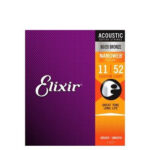Gluing a guitar bridge can be a nerve-wracking repair, especially when dealing with modern materials like those found on some Martin guitars. The challenge lies in achieving a reliable bond between non-porous surfaces that must withstand significant string tension. This is a story about one such repair and the lessons learned.
The Dilemma of Non-Porous Surfaces
Traditional Guitar Bridges are often glued to wood tops, creating a strong bond as the glue penetrates the porous wood fibers. However, some contemporary guitars utilize non-porous materials for both the bridge and the top. In this case, the anecdote involves a Richlite bridge (a resin-fiber composite) being attached to an HPL (High-Pressure Laminate, similar to Formica) top, common in some Martin models. Bonding these smooth, non-porous surfaces effectively is inherently difficult and prone to failure under the constant stress from guitar strings, which can easily reach around 200 lbs of tension.
Seeking Expert Advice and Finding a Solution
Faced with this bonding challenge, a repairer contacted Martin Guitars directly. The advice received was to use a specific 3M CA (Cyanoacrylate) glue, Scotch-Weld PR 1500, noted for its plastic-bonding properties. However, sourcing a small quantity of this industrial-grade adhesive proved difficult for a single repair job.
Searching for accessible alternatives, the repairer discovered Loctite “Plastics Bonding System” CA glue at a local hardware store. This readily available option seemed like a viable substitute. To enhance the bond’s strength on the non-porous materials, both the Richlite bridge and the HPL top were roughened to create a better surface for adhesion. The Loctite glue was applied following the product instructions, and allowed to cure for a full day.
Recognizing the inherent risk in relying solely on glue for such a high-stress application, the repairer decided to augment the bond with bridge bolts, a technique reminiscent of older Gibson guitar designs. Two bolts were strategically placed and concealed with pearl dots, providing mechanical reinforcement in addition to the adhesive bond. After waiting several days for complete curing and cautious stringing, the repaired guitar was returned, with a caveat to the store owner: if the repair failed, the customer should contact Martin directly. Fortunately, weeks later, no failure was reported.
Shared Experiences and Lingering Doubts
Interestingly, a similar repair approach was independently observed in another HPL Martin guitar at the workshop of the late luthier Jim Grainger. Both repairs, using glue and reinforcing bolts, highlight the shared understanding among repair professionals about the limitations of simply gluing non-porous bridges under high tension. The anecdote concludes with a candid acknowledgement of the inherent gamble in these types of repairs and a humorous jab at the manufacturer for using materials that present such bonding challenges.
Key Considerations for Gluing Guitar Bridges
This story underscores several important points when dealing with guitar bridge repairs, particularly on modern instruments:
- Material Compatibility: Understanding the materials of both the bridge and the guitar top is crucial. Non-porous materials require specialized adhesives and surface preparation.
- CA Glue Limitations: While CA glues can be effective, they may not be sufficient for high-stress bonds on non-porous surfaces over the long term, especially under constant tension.
- Mechanical Reinforcement: In cases of doubt, incorporating mechanical fasteners like bolts or screws can significantly increase the reliability of the repair.
- Professional Consultation: For valuable instruments or when unsure, consulting with experienced luthiers or the guitar manufacturer is always a wise course of action.
While DIY repairs can be successful, especially with careful planning and execution, the story of this guitar bridge repair serves as a reminder of the complexities involved and the importance of understanding the materials and stresses at play.

